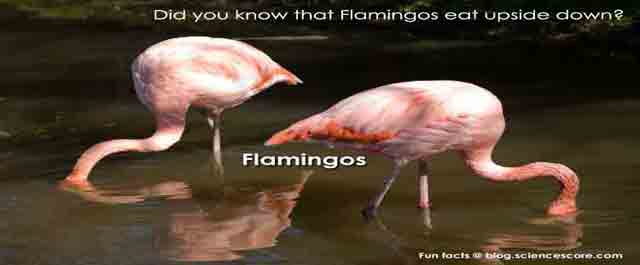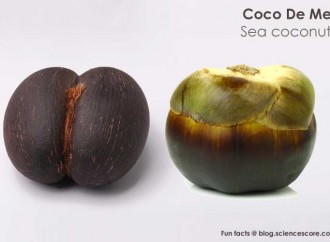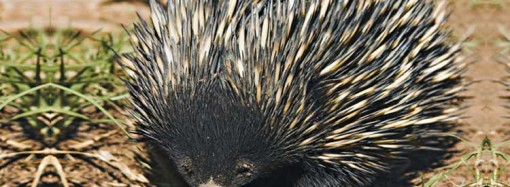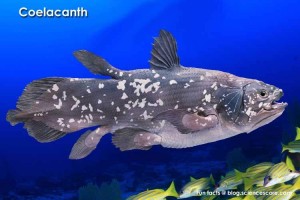If you’ve ever watched flamingoes wading in a stream, you might have noticed that they spend a lot of time with their heads in the water. That’s because flamingoes actually eat upside down! If you look at most birds, they have a large upper beak that’s fixed in place, and a smaller lower beak that
If you’ve ever watched flamingoes wading in a stream, you might have noticed that they spend a lot of time with their heads in the water. That’s because flamingoes actually eat upside down!
If you look at most birds, they have a large upper beak that’s fixed in place, and a smaller lower beak that moves up and down. But if you look closely at a flamingo’s beak, it’s the opposite! The large upper beak can move freely!
This is because flamingos are filter feeders. Their beaks act like a big sieve to filted the tiny plants and crustaceans they eat from the water. The inside of the beak is lined with rows of horny plates. When a flamingo gets hungry, it turns its head upside down, dunks it in the water, and swings it’s head back and forth. A large, spiny tongue helps force the water past the bony plates, which catch the food in the water just like a fishing net! The flamingo can then lift its head out of the water and let the water drain away.
It’s their special diet that gives the flamingos their pink colour. It comes from chemicals in the algae and brine shrimp that the flamingoes eat. Without it, their feathers turn white!
But their unique way of feeding hasn’t always been helpful to the flamingo. In Roman times, the emperors decided that a flamingo’s massive tongue was a delicacy, and had it served with parrotfish livers, pheasant brains, and lamprey guts!
















































Leave a Reply